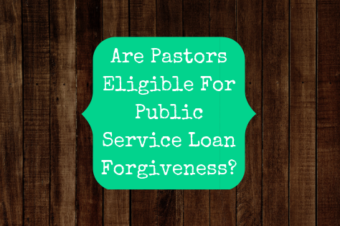
As you look forward to starting seminary in the fall, perhaps the biggest thing on your mind is how in the world am I going to pay for it? If you’re like 69% of college students, you’re probably planning on taking out student loans.
Even if you used loans to pay for your undergraduate degree, things are different once you get your Bachelor’s. Your options have changed. So that you can make an educated decision, here are the loan options available to help you pay for seminary:
Direct Unsubsidized Loans
The federal government offers direct unsubsidized loans to both graduate and undergraduate students. These are not need-based, so all you need is to be enrolled at least part-time in a participating school to qualify.
To apply for these loans, you have to submit the Free Application For Federal Student Aid (FAFSA). The seminary will use the information from the FAFSA to determine how much aid (loans) to award you. The annual limit for direct unsubsidized loans is $20,500 and the aggregate limit, including undergraduate loans, is $138,500.
The current interest rate (until July 1, 2019) for these loans is 6.6% and there is also a 1.062% loan fee. Once you graduate, leave school, or drop below half-time enrollment, you will have a six-month grace period before you have to start paying back your loan. However, interest will accrue while you are in school.
Direct PLUS Loans
If your direct unsubsidized loans are not enough to cover the cost of seminary, you can take out a Direct PLUS loan from the government. These loans do require a credit check. Because of this, you are not guaranteed eligibility, though they are more lenient than most private lenders. Eligibility also includes being enrolled at least half-time.
The borrowing limit is the cost of seminary attendance (as determined by the school) less any other financial aid you have received. So, you should be able to cover all of your costs with a grad PLUS loan. The current interest rate (until July 1, 2019) is 7.6% and there is a 4.248% loan fee. As with the unsubsidized government loan, interest begins accruing immediately. However, you do have a six-month grace period after leaving school before you are required to begin making payments.
Private Loans
While the government loans above have some unique benefits, like flexible repayment options and the potential for loan forgiveness, you may also want to consider private student loans. Private loans are issued directly by banks and credit unions, not the government.
As such, they have different rules for eligibility that may be more flexible than the government rules. Also, some private loans do not have origination fees like the government loans. While direct unsubsidized loans usually have the lowest interest rates, well-qualified borrowers may be able to get lower rates with private loans than PLUS loans.
It’s important to note something that is not on this list- subsidized government loans. Those are the loans that do not accrue interest while you are in school. Unfortunately, those are only available for undergraduate students, so they are not an option for seminary.
Even if you’re very familiar with student loans from your undergraduate days, don’t assume you know everything you need to. Come back next week as we discuss the differences between undergraduate and seminary loans. You owe it to yourself, your family, and your future ministry to make sure you know what you’re getting yourself into before taking out seminary loans.



